In November 1969, American astronauts prepared to embark on the second mission to land humans on the Moon. Building on the success of the first Moon landing, Apollo 12’s mission called for making a pinpoint landing in the Ocean of Storms and conducting two spacewalks during a much longer stay on the lunar surface. The precision landing would enable the astronauts to visit and examine a robotic spacecraft that landed on the Moon two and a half years earlier. While the six-day countdown proceeded, the astronauts wrapped up their training for the mission.
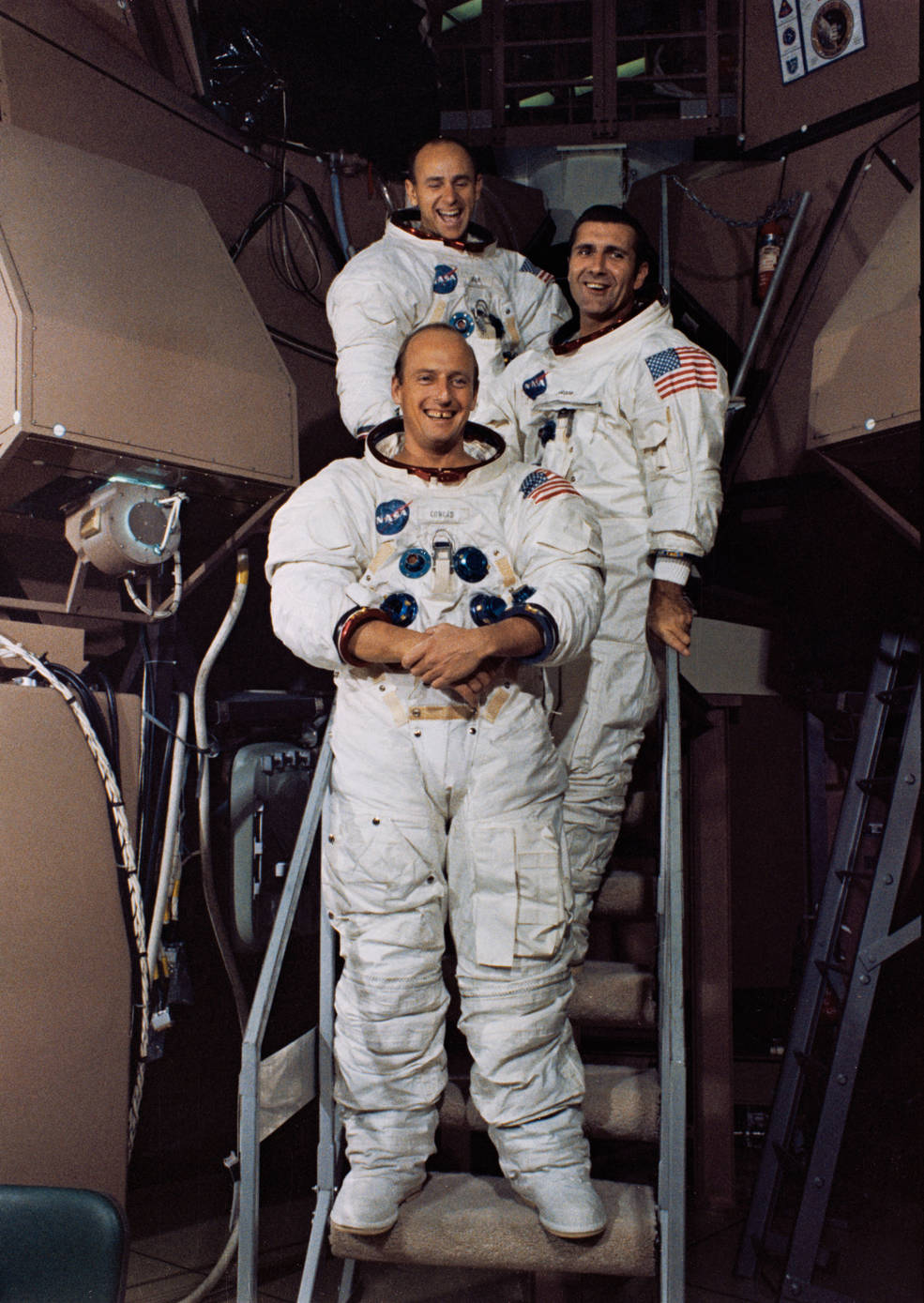
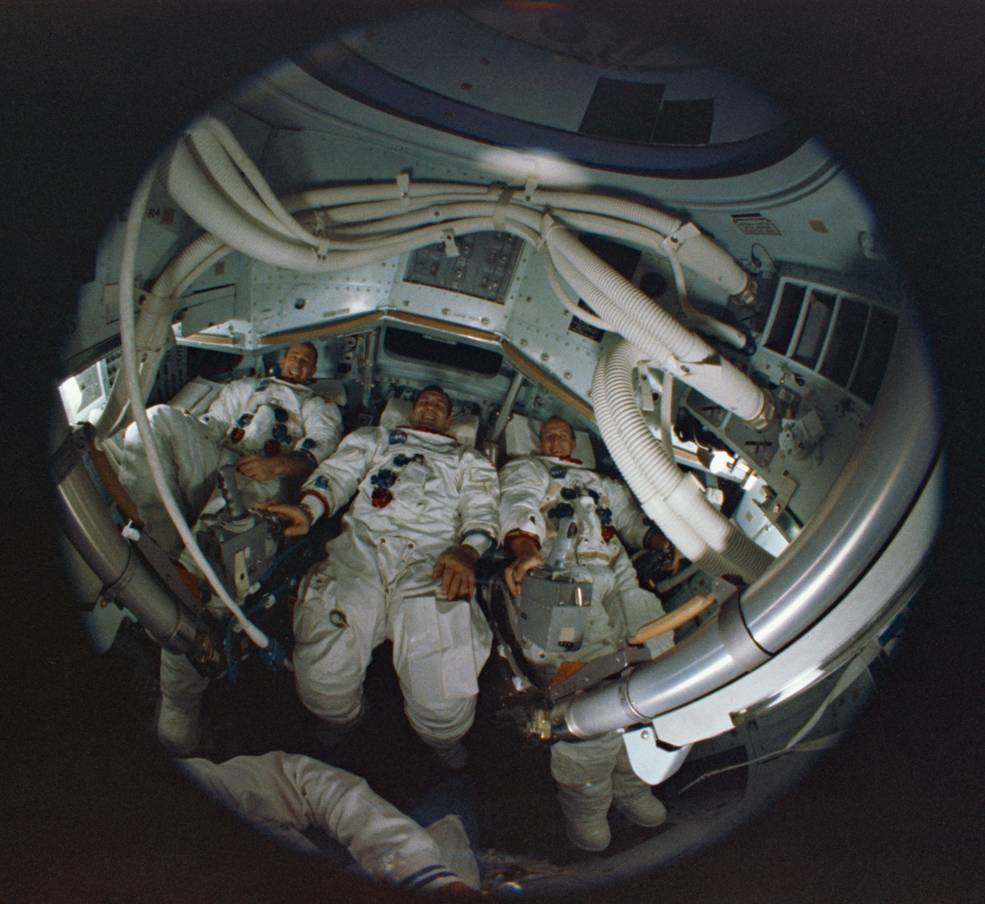
Left: Apollo 12 astronauts (front to back) Conrad, Gordon, and Bean stand outside the
Command Module simulator. Right: Apollo 12 astronauts (left to right) Bean, Gordon, and
Conrad seen through a fish-eye lens inside the Command Module simulator.
The countdown for Apollo 12 began on Nov. 8, 1969, aiming for launch on Nov. 14. Controllers in Firing Room 2 of the Launch Control Center at Kennedy Space Center’s (KSC) Launch Complex 39 monitored events as engineers readied the Saturn V rocket and the Apollo spacecraft for flight. The prime crew of Commander Charles “Pete” Conrad, Command Module Pilot (CMP) Richard F. Gordon, and Lunar Module Pilot (LMP) Alan L. Bean completed their final runs in the spacecraft simulators and rehearsed walking in the simulated lunar gravity aboard KC-135 aircraft parabolic flights. Their backups David R. Scott, Alfred M. Worden, and James B. Irwin also participated in the training, with Scott completing several flights in the Lunar Landing Training Vehicle to rehearse flying the final few hundred feet to the lunar surface. The crews also received their final geology briefings from geologist-astronaut Harrison H. “Jack” Schmitt and astronaut Edward G. Gibson, the Capsule Communicator in Mission Control during the lunar surface excursions. The astronauts maintained their flying skills using T-38 Talon supersonic training aircraft.
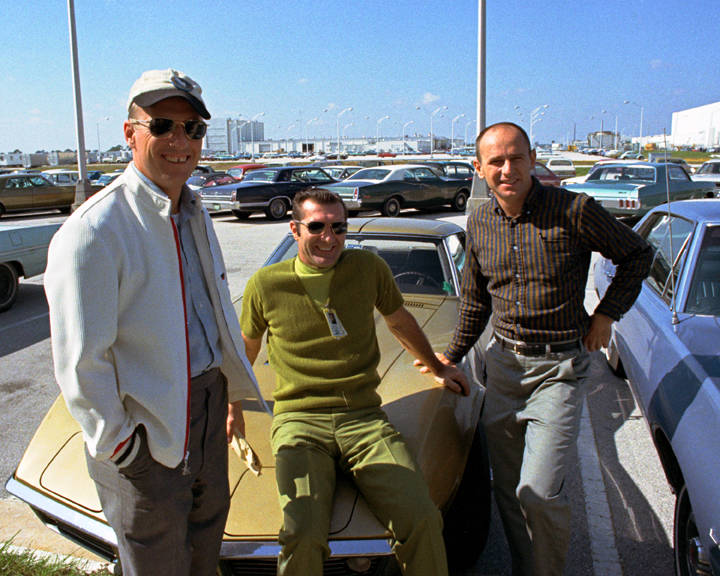
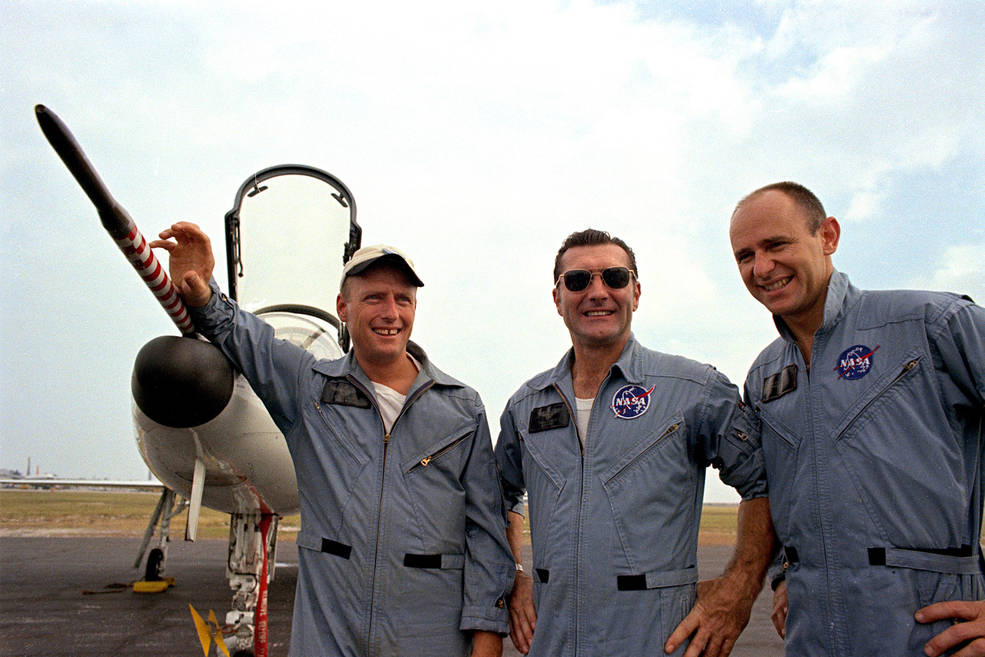
Left: Apollo 12 astronauts (left to right) Conrad, Gordon, and Bean relax between training sessions. Right: Apollo 12 astronauts (left to right) Conrad, Gordon, and Bean pose in front of a T-38 Talon training aircraft.
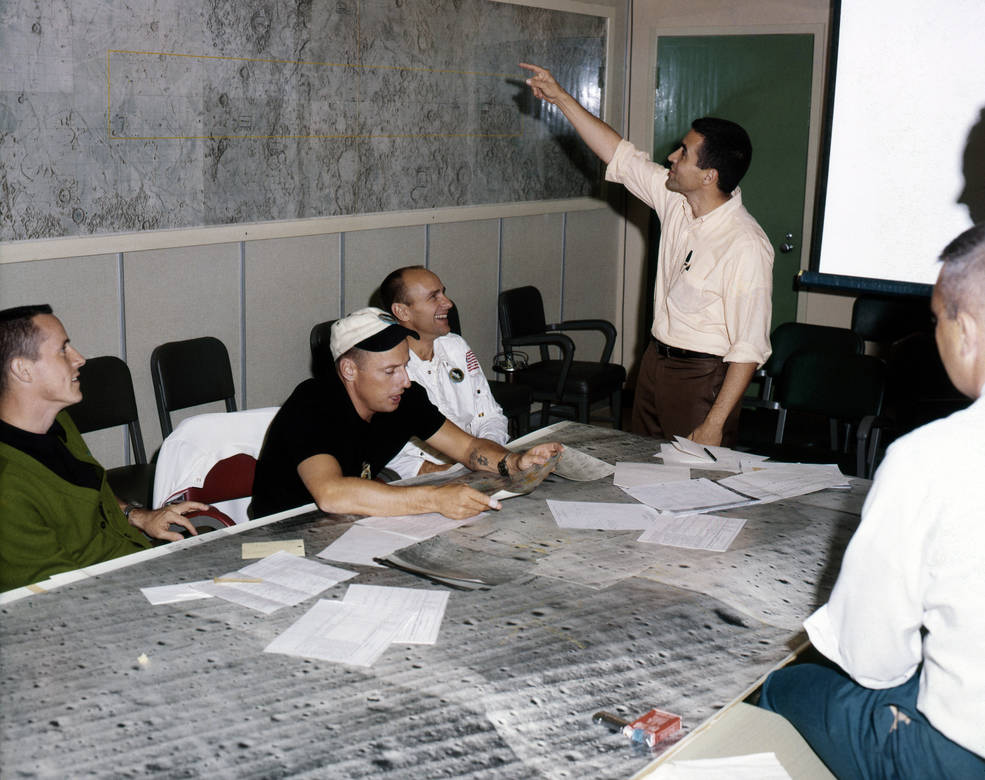
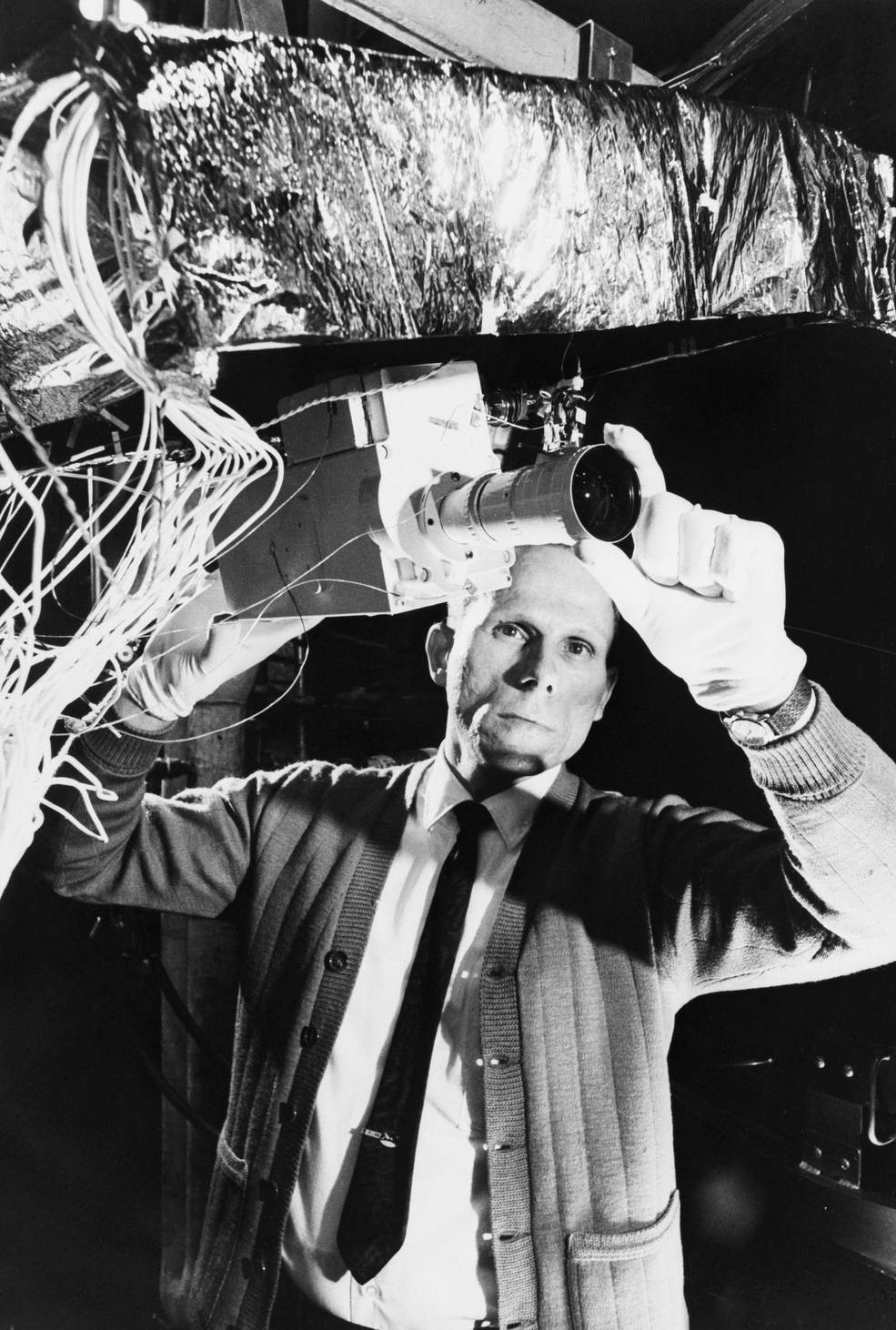
Left: Apollo 12 astronauts (second from left, wearing white cap) Conrad and Bean during final geology training, with astronauts Gibson (at left) who served as Capsule Communicator during the Moon walks and Schmitt (at right), the only geologist astronaut. Right: A Westinghouse technician adjusts the color TV flown on Apollo 12 prior to a vacuum chamber test.
NASA announced on Nov. 5 that Apollo Spacecraft Program Manager James A. McDivitt decided that Apollo 12 will carry a color TV camera in the Lunar Module (LM) to the surface. Conrad and Bean will place the camera, built by Westinghouse, on the lunar surface to return images during their two 3.5-hour Moon walks. The camera’s improved image quality should return better video than that returned by the black-and-white camera deployed on the lunar surface during the Apollo 11 mission and also minimize the blurring caused by astronaut movement. Engineers refurbished the camera that flew inside the Apollo 10 Command Module in May 1969 for its new role on the lunar surface during Apollo 12.
On Nov. 5, NASA announced that after a careful review of the lunar samples returned by the Apollo 11 astronauts revealed no evidence of any lunar microorganisms, the Apollo 12 astronauts will not be required to wear the bulky Biological Isolation Garments (BIGs) during recovery operations in the Pacific Ocean. For Apollo 11, the BIGs constituted an element of the overall planetary back-contamination prevention protocol put in place in the remote possibility that the astronauts or the samples might harbor microorganisms potentially harmful to terrestrial life. The crew, however, found the suits uncomfortable as they provided limited ventilation, leading to fogging of the visor that limited their visibility. For Apollo 12, assuming their health status at splashdown is satisfactory, after splashdown the astronauts will don fresh flight suits as well as oral-nasal masks, with the BIGs available in the contingency of an unexplained crew illness. Recovery procedures from then on will essentially repeat those performed after Apollo 11, with a helicopter hoisting the crew from the sea and ferrying them to the prime recovery ship, the USS Hornet (CVS-12). Once on the carrier, the astronauts will walk a few steps to the waiting Mobile Quarantine Facility in which they will be quarantined with a flight surgeon and an engineer until their arrival back at the Lunar Receiving Laboratory at the Manned Spacecraft Center, now the Johnson Space Center in Houston. As after the first Moon landing mission, the Apollo 12 astronauts will remain in quarantine for a total of 21 days after leaving the lunar surface.
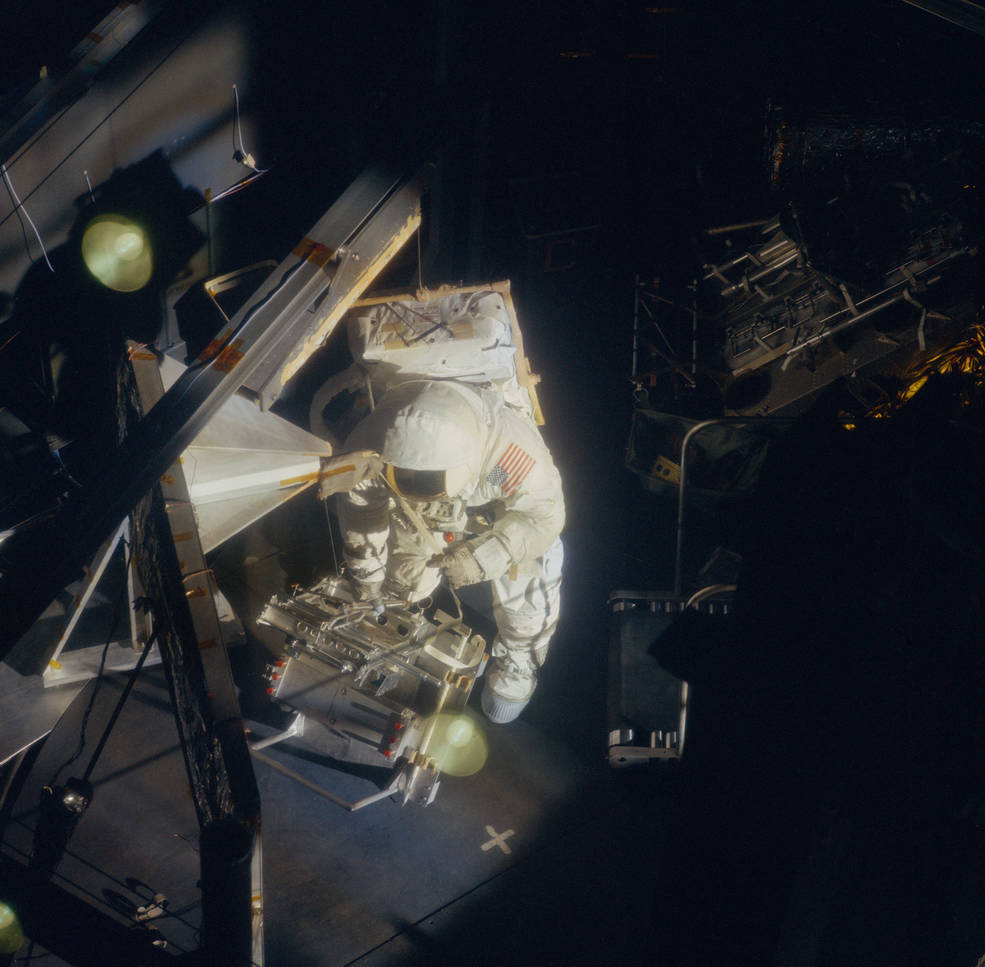
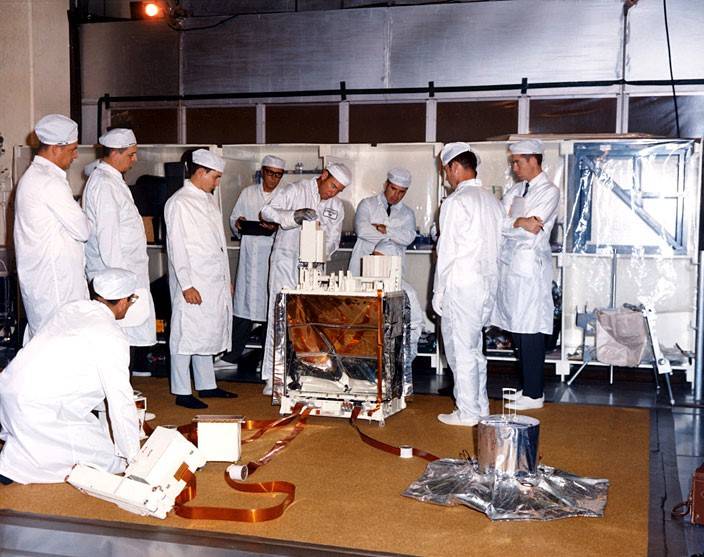
Left: Apollo 13 commander Lovell testing his space suit in the SESL vacuum chamber. Right: Lovell (holding hardware) and Young (second from right) practicing deploying ALSEP equipment.
Looking beyond Apollo 12, the crew of the next planned Moon landing mission, Apollo 13, busied itself with training activities. The prime crew consisted of Commander James A. Lovell, CMP Thomas K. Mattingly, and LMP Fred W. Haise, backed up by John W. Young, Jack L. Swigert, and Charles M. Duke. At MSC, Lovell tested his spacesuit’s pressure integrity in a vacuum chamber in the Space Environment Simulation Laboratory (SESL). The astronauts practiced deploying the Apollo Lunar Surface Experiment Package (ALSEP), a suite of science equipment to be left on the lunar surface. On Nov. 11, Lovell, Haise, Young, and Duke travelled to Kilbourne Hole, New Mexico, for a one-day geology field trip, accompanied by several geologists. In the Manned Spacecraft Operations Building at KSC, workers continued to prepare the Apollo 13 spacecraft. They removed the Command and Service Module (CSM) from the vacuum chamber and installed the landing legs on the LM, in preparation for stacking the spacecraft onto the Saturn V rocket in early December.
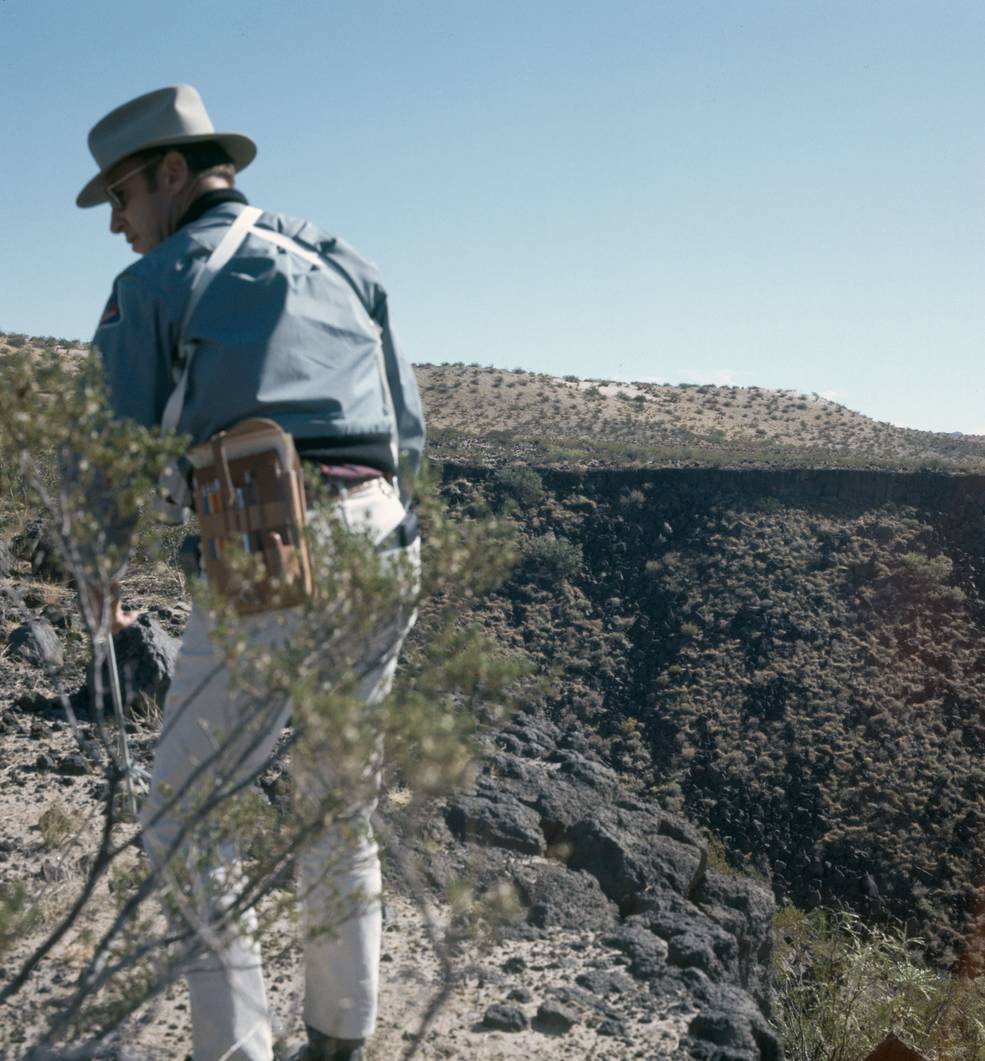
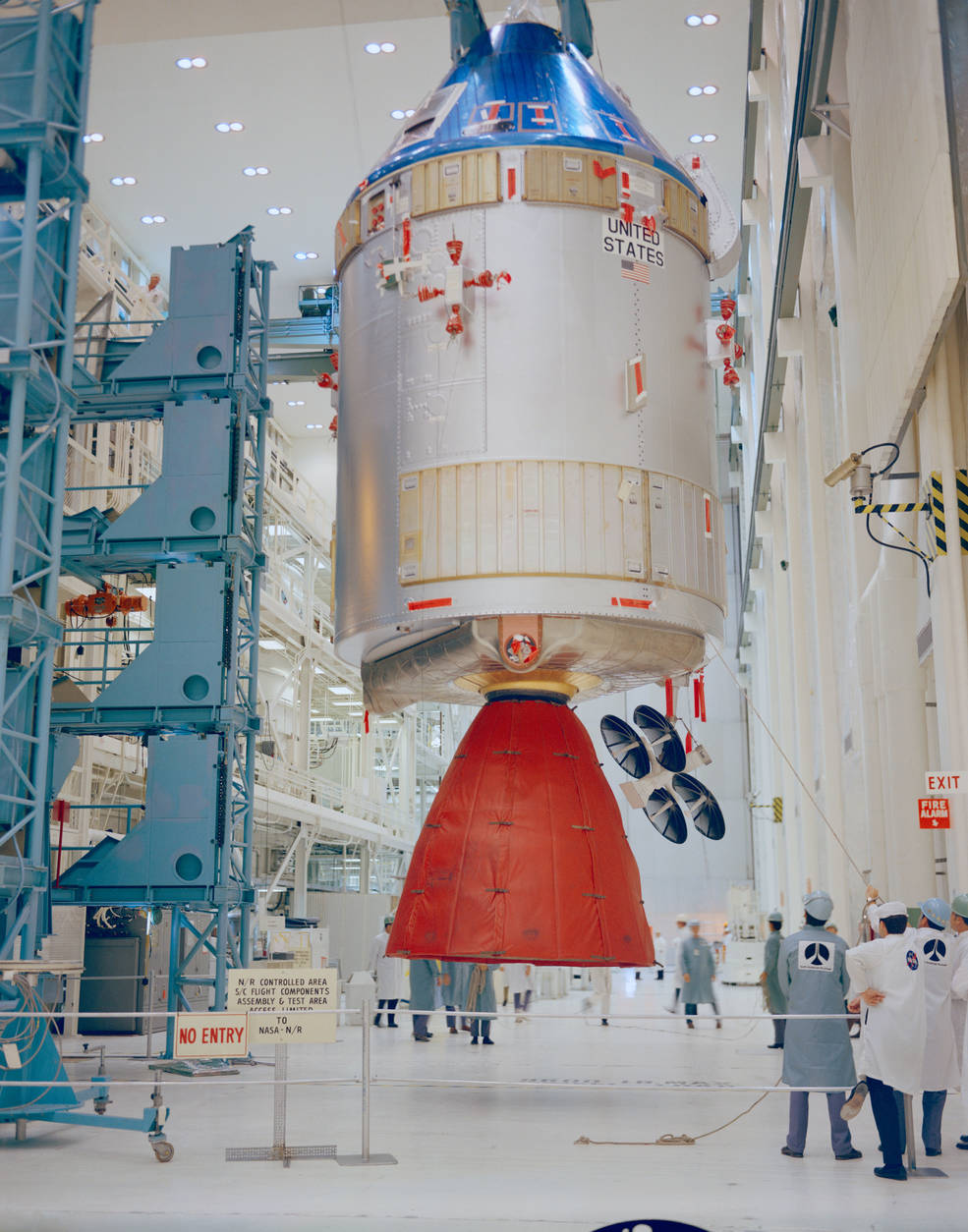
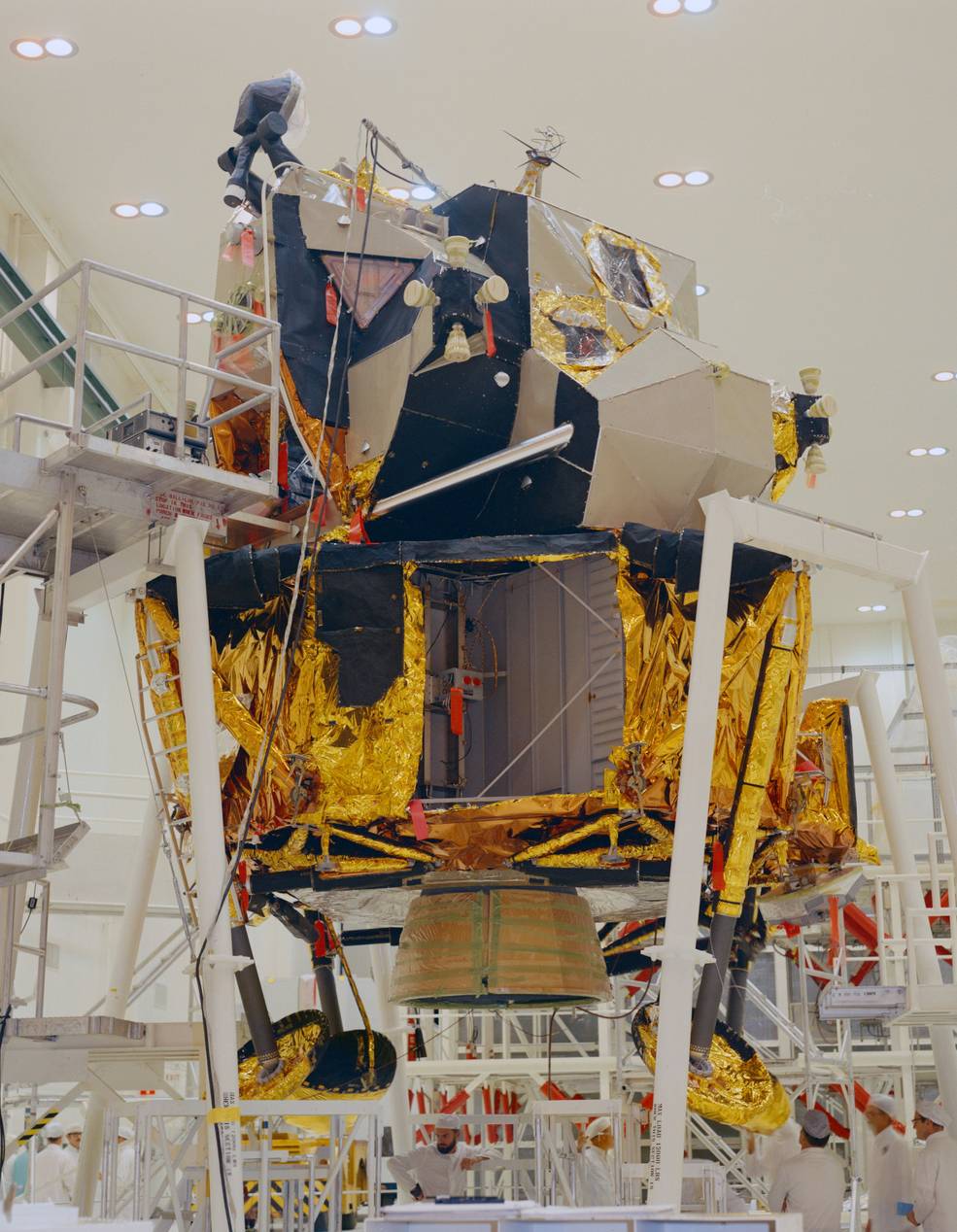
Left: Lovell during the geology field trip in Kilbourne Hole, New Mexico. Middle: Workers remove the CSM from the vacuum chamber. Right: Workers have completed attaching the landing legs to the LM.

























